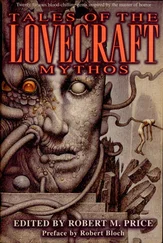Robert Pirsig - Lila. An Inquiry Into Morals
Здесь есть возможность читать онлайн «Robert Pirsig - Lila. An Inquiry Into Morals» весь текст электронной книги совершенно бесплатно (целиком полную версию без сокращений). В некоторых случаях можно слушать аудио, скачать через торрент в формате fb2 и присутствует краткое содержание. Жанр: Современная проза, на английском языке. Описание произведения, (предисловие) а так же отзывы посетителей доступны на портале библиотеки ЛибКат.
- Название:Lila. An Inquiry Into Morals
- Автор:
- Жанр:
- Год:неизвестен
- ISBN:нет данных
- Рейтинг книги:3 / 5. Голосов: 1
-
Избранное:Добавить в избранное
- Отзывы:
-
Ваша оценка:
- 60
- 1
- 2
- 3
- 4
- 5
Lila. An Inquiry Into Morals: краткое содержание, описание и аннотация
Предлагаем к чтению аннотацию, описание, краткое содержание или предисловие (зависит от того, что написал сам автор книги «Lila. An Inquiry Into Morals»). Если вы не нашли необходимую информацию о книге — напишите в комментариях, мы постараемся отыскать её.
Lila. An Inquiry Into Morals — читать онлайн бесплатно полную книгу (весь текст) целиком
Ниже представлен текст книги, разбитый по страницам. Система сохранения места последней прочитанной страницы, позволяет с удобством читать онлайн бесплатно книгу «Lila. An Inquiry Into Morals», без необходимости каждый раз заново искать на чём Вы остановились. Поставьте закладку, и сможете в любой момент перейти на страницу, на которой закончили чтение.
Интервал:
Закладка:
When Phædrus started to read yachting literature he ran across a description of the green flash of the sun. What was that all about? he wondered. Why hadn’t he seen it? He was sure he had never seen the green flash of the sun. Yet he must have seen it. But if he saw it, why didn’t he see it?
This static filter was the explanation. He didn’t see the green flash because he’d never been told to see it. But then one day he read a book on yachting which said, in effect, to go see it. So he did. And he saw it. There was the sun, green as green can be, like a GO light on a downtown traffic semaphore. Yet all his life he had never seen it. The culture hadn’t told him to so he hadn’t seen it. If he hadn’t read that book on yachting he was quite certain he would never have seen it.
A few months back a static filtering had occurred that could have been disastrous. It was in an Ohio port where he had come in out of a summer storm on Lake Erie. He had just barely been able to sail to windward off the rocks through the night until he reached a harbor about twenty miles down the coast from Cleveland.
When he got there and was safely in the lee of the jetty he went below and grabbed a harbor chart and brought it up and held it, soaking wet, in the rain, using the boat’s spreader lights to read by while he steered past concrete dividing walls, piers, harbor buoys and other markers until he found the yacht basin and tied up at a berth.
He had slept exhausted for most of the next day, and when he woke up and went outside it was afternoon. He asked someone how far it was to Cleveland.
You’re in Cleveland, he was told.
He couldn’t believe it. The chart said he was in a harbor miles from Cleveland.
Then he remembered the little discrepancies he had seen on the chart when he came in. When a buoy had a wrong number on it he presumed it had been changed since the chart was made. When a certain wall appeared that was not shown, he assumed it had been built recently or maybe he hadn’t come to it yet and he wasn’t quite where he thought he was. It never occurred to him to think he was in a whole different harbor!
It was a parable for students of scientific objectivity. Wherever the chart disagreed with his observations he rejected the observation and followed the chart. Because of what his mind thought it knew, it had built up a static filter, an immune system, that was shutting out all information that did not fit. Seeing is not believing. Believing is seeing.
If this were just an individual phenomenon it would not be so serious. But it is a huge cultural phenomenon too and it is very serious. We build up whole cultural intellectual patterns based on past facts which are extremely selective. When a new fact comes in that does not fit the pattern we don’t throw out the pattern. We throw out the fact. A contradictory fact has to keep hammering and hammering and hammering, sometimes for centuries, before maybe one or two people will see it. And then these one or two have to start hammering on others for a long time before they see it too.
Just as the biological immune system will destroy a life-saving skin graft with the same vigor with which it fights pneumonia, so will a cultural immune system fight off a beneficial new kind of understanding like that of the bruj’o in Zuni with the same kind of vigor it uses to destroy crime. It can’t distinguish between them.
Phædrus recognized that there’s nothing immoral in a culture not being ready to accept something Dynamic. Static latching is necessary to sustain the gains the culture has made in the past. The solution is not to condemn the culture as stupid but to look for those factors that will make the new information acceptable: the keys. He thought of this Metaphysics of Quality as a key.
The Dharmakaya light. That was a huge area of human experience cut off by cultural filtering.
Over the years it also had become a burden to him, this knowledge about the light. It cut off a whole area of rational communion with others. It was not something that he could talk about without being slammed by the cultural immune system, being thought crazy, and with his record it was not good to invite that suspicion.
But he had seen it again on Lila tonight and he had seen it very strongly back in Kingston. That’s sort of what got him into all this. It told him there was something of importance here. It told him to wake up and not go by the book in dealing with her.
He didn’t think of this light as some sort of supernatural occurrence that had no grounding in physical reality. In fact he was sure it was grounded in physical reality. But nobody sees it because the cultural definition of what is real and what is unreal filters out the Dharmakaya light from twentieth-century American reality just as surely as time is filtered out of Hopi reality, and green-yellow differences mean nothing to the Natchez.
He couldn’t demonstrate it scientifically, because you couldn’t predict when it was going to occur and thus couldn’t set up an experiment to test for it. But, without any experimental testing, he thought that the light was nothing more than an involuntary widening of the iris of the eyes of the observer that lets in extra light and makes things look brighter, a kind of hallucinatory light produced by optic stimulation, somewhat like the light that comes when one stares at something too long. Like eye blinks, it’s assumed to be an irrelevant interruption of what one really sees, or it’s assumed to be a subjective phenomenon, which is unreal, as opposed to an objective phenomenon, which is real.
But despite filtering by the cultural immune system, references to this light occur in many places, scattered, disconnected, and unrelated. Lamps are sometimes used as symbols of learning. Why should they be? A torch, like the old Blake school torch, is sometimes used as a symbol of idealistic inspiration. When we suddenly understand something we say, I’ve seen the light, or, It has dawned on me. When a cartoonist wants to show someone getting a great idea he puts an electric light bulb over the character’s head. Everybody understands instantly what this symbol means. Why? Where did it come from? It can’t be very old because there weren’t any electric bulbs much before this century. What have electric light bulbs got to do with new ideas? Why doesn’t the cartoonist ever have to explain what he means by that light bulb? Why does everybody know what he means?
In other cultures, or in the religious literature of our past, where the immune system of objectivity is weak or non-existent, reference to this light is everywhere, from the Protestant hymn, Lead Kindly Light, to the halos of the saints. The central terms of Western mysticism, enlightenment, and illumination refer to it directly. Darsana , a fundamental Hindu form of religious instruction, means giving of light. Descriptions of Zen sartori mention it. It is referred to extensively in The Tibetan Book of the Dead. Aldous Huxley referred to it as part of the mescaline experience. Phædrus remembered it from the time with Dusenberry at the peyote meeting, although he had assumed that it was just an optical illusion produced by the drug and not of any great importance.
Proust wrote about it in Remembrance of Things Past . In El Greco’s Nativity the Dharmakaya light emanating from the Christ child provides the only illumination there is. El Greco was thought by some to have defective eyesight because he painted this light. But in his portrait of Cardinal Guevara, the prosecutor of the Spanish Inquisition, the lace and silks of the cardinal’s robes are done with exquisite objective luster but the light is completely absent. El Greco didn’t have to paint it. He painted what he saw.
Читать дальшеИнтервал:
Закладка:
Похожие книги на «Lila. An Inquiry Into Morals»
Представляем Вашему вниманию похожие книги на «Lila. An Inquiry Into Morals» списком для выбора. Мы отобрали схожую по названию и смыслу литературу в надежде предоставить читателям больше вариантов отыскать новые, интересные, ещё непрочитанные произведения.
Обсуждение, отзывы о книге «Lila. An Inquiry Into Morals» и просто собственные мнения читателей. Оставьте ваши комментарии, напишите, что Вы думаете о произведении, его смысле или главных героях. Укажите что конкретно понравилось, а что нет, и почему Вы так считаете.











